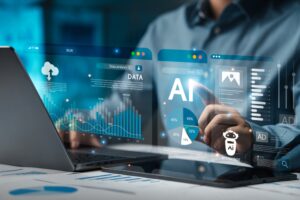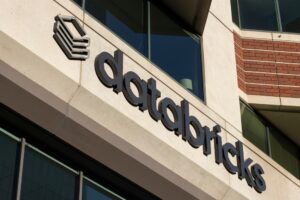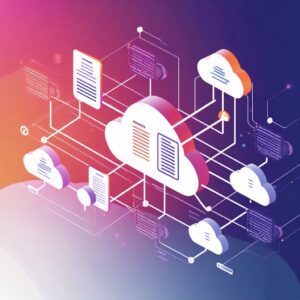
(Dee Karen/Shutterstock)
For all progress in data infrastructure, most businesses are still struggling with the last mile: allows business users to work directly with data and AI without relying on the technical team.
In his key message at the Databricks 2025 Summit, the CEO of Databricks Ali Ghodsi framed it as one of the most urgent challenges that is now facing an organization that now focuses on growing complexity, increasing costs and locking dealers that continue to slow data business.
Databricks announced in liability for these challenges Databricks oneWhich the company describes as a “new experience” that provides users “simple and secure access to the data and abilities of AI of his platform for data news”.
In its core, the databricks one is on the top of the databricks assembled layer without code that is focused on business Platform for data intelligence. It combines interactive dashboards, conversational AI and low code applications in a user -friendly interface adapted to non -technical users.
Databricks One should not replace technical experience – it is to follow. Databricks is basically a multi -level platform. This means that technical users, such as data scientists and data engineers, are likely to continue using the full databricks work space for comprehensive workflows, model development and pipe orchestration. However, Non-Technicals now have a simple interface for navigation on the platform.

(Tada Images/Shutterstock)
The key feature of the release is the use of large language models (LLMS), most of all note through the new AI/BI Genie assistant. Genie, located directly into the Databricks One, allows corporate users to ask questions in ordinary language and receive Gutred resorts in business data.
This is possible through the integration of Genius with the Unity catalog. The catalog provides the necessary context of metadata and management, allowing the genie to interpret terminology specific to business, enforce access control and generate outputs from the context of the structured data of the organization.
Databricks shared that the platform would soon support a feature called “Deep Research” designed to exceed the standard descriptive analytics. It will use AI to identify root causes, reveal trends and generate contextual summons that help to explain not only what happened, but why. This feature offers an insight into the AI era, where AI-power tools make more than a message-to think with greater car and flexibility.
In addition to Genie, Databricks, it extends its support for the Genai corporate class through features such as the model of the model foundation, which is now available in public view. This ability allows organizations to adapt Open-source LLMS to its owner’s data and offer tools for life cycle management, such as tracking, version and management.
These adapted models can be deployed through API or accessible through SQL that are promoted into existing workflows. With native frame support such as Face and Langchain, along with the built -in serving model, databricks is placed as an understanding of the development platform, operating and scaling of generative AI throughout the business. Users don’t need a new magazine to make it work. After adaptation, the models in the databricks can be deployed via the API or accessible to SQL, which facilitates them inserting into existing workflows.

Ali Ghodsi: CEO and Co -founder of Databricks
Databricks One supports familiar frames such as hugging the face and Langchain, so teams can build with tools they already know. The built -in serving model takes care of deployment without the usual complexity. The aim is to reduce directorial costs and get the teams concentrated on making generative artificial intelligence, not just with it.
Databricks are one of the quiet more powerful add -ons in Databricks One. They provide teams with the ability to create and deploy interactive and own workflows that combine AI, analytics and transaction logic, all in one place. This means that instead of jumping between different systems, users can now do much more inside the databricks.
For example, a supplier chain team could hypothetically create APT that Mautes’s stock data, times, and lead -controlled span and manual updates with AI with a single interface inside the databricks.
In addition to new features and simple interfaces, the new platform is a strategic shift where Databricks expands its reach for technical users and itself as a uniform environment for building and operational data and AI across the company.
“Our mission in databricks is to democratize data + AI,” Ghodsi said. “Each person from each level of skills should have equal access to data and use AI. With Databricks One we want to make our experience for non -technical users as amazing as our experience for technical users. This is our first step to make the organization unlock the full value of their data and innovation.”
The introduction of databricks also copes with a wider trend of industry, where data infrastructure companies want to move the magazine to directly connect the decision -making traders.

(Shutterstock)
Snowflake moves in The same direction with his bark AI SNOWSIGHT services and interfaces that are designed to make data more accessible to business users. Microsoft combines its analytical trays under the Folation and Copilot woven to help users navigate data with natural language. Meanwhile, Google converts a look into the front door for its AI tools, now improved Gemini to allow conversational access to knowledge.
Introducing the databricks One along with Brick agentIt emphasizes how Databricks expands its role in the whole spectrum of corporate AI. It is a step that has spread a challenge in its main speech: it cut out the complexity that kept AI outside the hands of the people who need it most.
Related items
Data Management will be the key to AI success in 2025, let’s say a study
Three data challenges that leaders must overcoma to successfully implement AI
AI will emerge from secrecy to “end the era of the data lake”
(Tagstotranslate) ali ghodsi

